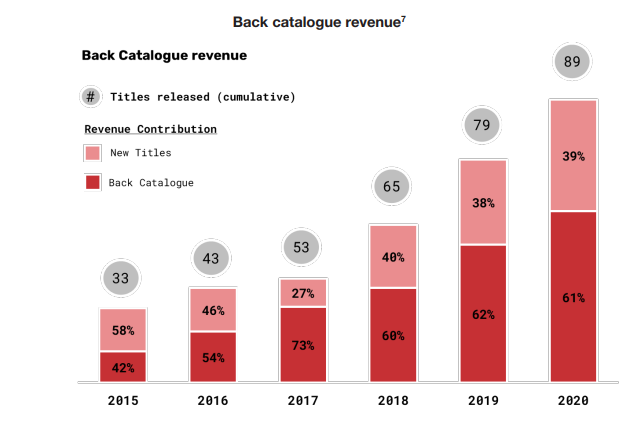
As I wrote in my last blog post, Valve will remove all URLs that are embedded in your game’s Steam page. Valve’s aim is to declutter Steam pages that are no longer about the game itself. For the most part, this is a very good, proactive move. It keeps Steam from turning into a spammy mess and negatively impacting the browsing experience of shoppers.
However, this move makes it harder to grow your studio, because if you are working on a new game, the best source of wishlists are from people who bought and played your previous games. There is an old marketing saying that goes something like this (I couldn’t find the original source so I am paraphrasing)
It is cheaper to retain your current customers, than it is to find new ones
Making multiple games and telling your existing customers about your new one is how you build your studio sustainably.
So, how do you tell them if you can’t add links to your store page?
Under the new rules, the best shot at promoting to existing customers is by adding links within all your past games.
Here are several ways to do this:
Option #1 Pre-Game Launcher
This is the most heavy handed technique (but by my guess, also the most effective).
How it works: Before players even get into the game’s main menu, a separate program is launched that has a directory of links.
Here is the cross-promo launcher for Baldur’s Gate 3. Notice they don’t just cross promote their other games like Divinity: Original Sin 2, but also physical products like physical media and Owlbear Beanies.
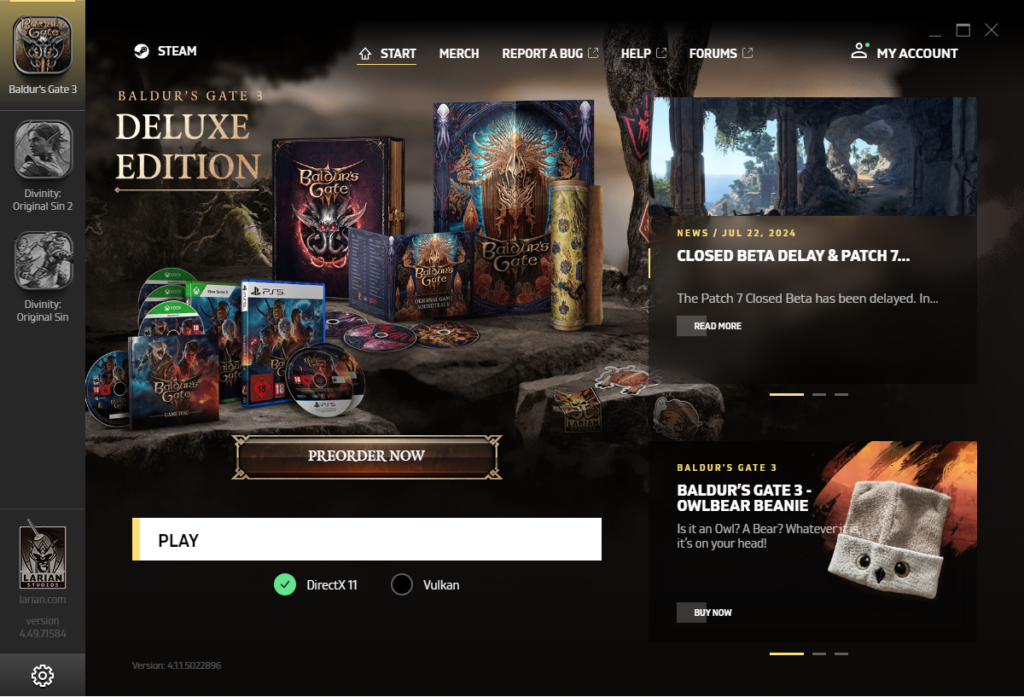
This is a very blunt approach and only the most massive studios with the most loyal fans will probably tolerate this.
Definitely allow your fans to disable this. For Baldur’s Gate, you add the “–skip-launcher” command to the properties window and it blocks it. You could also maybe just add a checkbox to it that says “don’t show again.”
Option #2 Main menu dynamic list
The main menu of every game that Playway publishes there is a lists their upcoming games.
How it works: This is a dynamic list that can be updated remotely by the Playway publisher. The marketing team at Playway can update some data file somewhere and without uploading any new builds, every single game that every single Playway player is looking at instantly sees a new list of upcoming games.
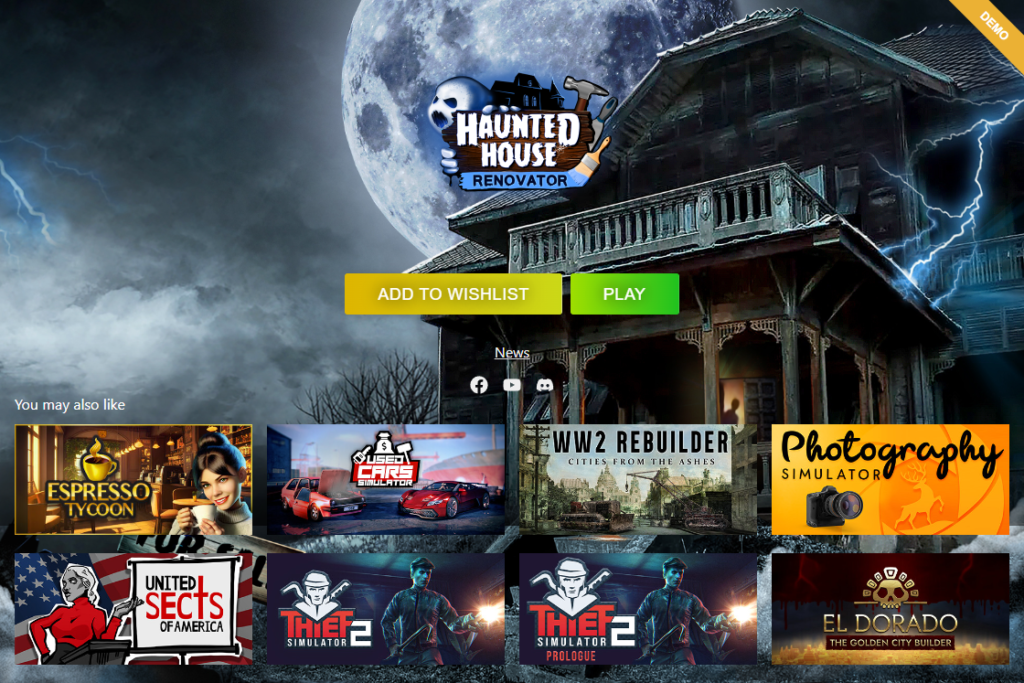
This is very very powerful and not enough teams (and not enough publishers) spend the resources to build a tool that can do this type remote-controlled cross promotion. This is worth the time if you are a studio building multiple games.
The other benefit of creating a remote-controlled promotional tool is that it is often tricky to re-compile and upload your old games to steam. The version of the engine you initially build the old game with is out of date, the old build server doesn’t work anymore, you don’t remember the login for your old source control server, etc. YUCK. It becomes very tricky to add a “wishlist new game” button to old games. But, once you add the remote-controlled widget to all your games, you don’t need to rebuild them when you announce your new one. Just, update the server hosted file, and all the games automatically pick up the change.
If you are a new studio with only 2 or 3 games, you can hardcode this by uploading new builds of your old games.
Option #3 In-game popup
Jake and Helen Birkett over at Grey Alien Games embedded this popup ad into all their upcoming games to promote Regency Solitaire II.

It is very bold and very effective. Jake outline how well this worked in a blog post on his Patreon (which is good and I recommend you subscribe if you are interested in sustainable game development)
With Jake’s permission I am sharing some of the data he posted in that patreon post.
When Regency Solitaire II was announced around December 2022, they added a bunch of cross promotional ads to their other games:
- Popup ad in the game that shows when you first load Ancient Enemy (shows once)
- Smaller icon that slides on to main menu (shows always)
- More games button (leads to menu with clickable links to all our games’ Steam pages)
Here is the number of link clicks each link type generated from their game Ancient Enemy.

Simply put, a big loud popup did the best. A more subtle button that says “More Games” that leads to a second popup did much worse.
Then, Jake looked across all of his catalog to see which games cross promoted the best. The results were somewhat obvious: the more similar the game, the better the click-through. The biggest source of traffic was (of course) players from the first game getting news of the sequel. (This is another reason to stick to a similar genre and theme among games you make).

Option #4: Main menu link
Grey Alien Games isn’t the only studio to cross promote within sequels. The studio Butterscotch Shenanigans did something similar when they were promoting their upcoming game Crashlands 2. On the main menu for Crashlands 1 there is a clear call-to-action: “Crashlands 2 Wishlist Today!”
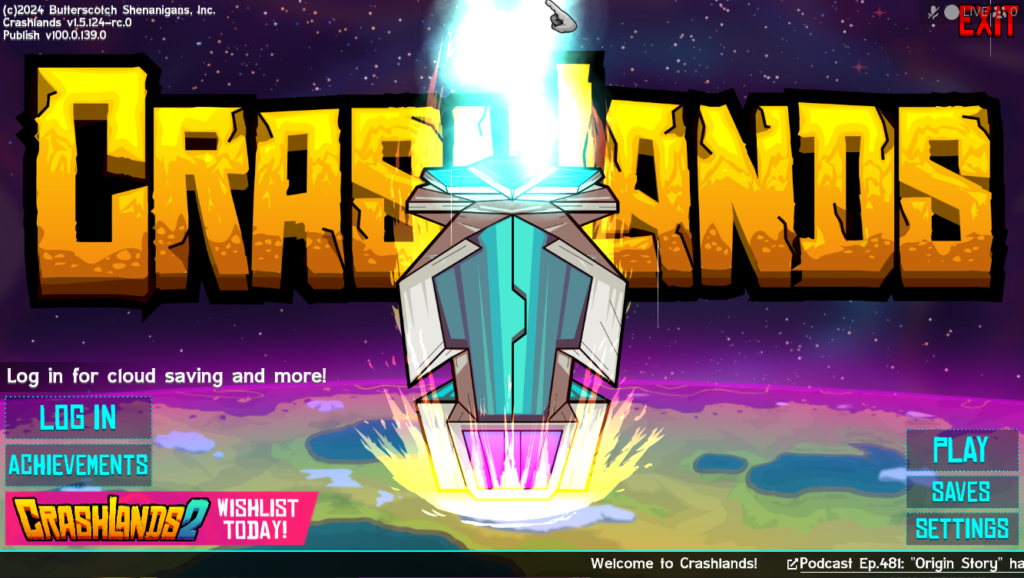
Of all of our UTM-attributable marketing efforts, the most effective two things we did by far were also the cheapest and easiest: just linking to Crashlands 2 from the Crashlands store page and from within Crashlands itself. Just doing those two things was more effective than all of our other (trackable) efforts combined.
How to properly manage your back catalog
Since in-game promotion is now the most powerful marketing technique, you must be strategic and deliberate with the games that contain the cross-promo links.
Here are a bunch of tips on how to do this
Tip #1: Cross promote from day 1
As soon as your new game is announced, make sure your old games are updated immediately to include the in-game link (adding these links is trivial if you manage to code up a dynamic cross-promo widget like Playway).
Tip #2: Transition old games from sources of profit, to sources of players
The first few years a game is on sale it is an income source (hopefully). But, as time goes on, discounts get deeper, and the excitement around it dwindles. You will make less from it. At some point, your old game is more valuable to you as a promotional and marketing tool than as a source of income. You are no longer worried about making money from these games, instead your primary goal is to get as many people playing the old games as possible so that they will fall in love with you and then learn about your upcoming game.
How to turn it into a promotional tool: With the crosslink button in place, take the older games that don’t make as much money, and DEEPLY discount them while still heavily promoting them. Submit these games to bundles like Humble and Fanatical.
Again, Here is the folks at Butterscotch Shenanigans did this brilliantly. Here is the sales chart for Crashlands 1 (originally released in 2016). Notice how the game’s price was discounted to two “historic lows” (indicated in red) shortly after the game was announced.

Additionally, if your game made a lot of money for Valve (gross of $250,000+) see if they will give you a Daily Deal with a ridiculously low price.
Maybe go crazy and release a free version for a limited time on itch.io.
Tip #3: Keep your demo up
In addition to deeply discounting your back catalog, re-launch free demos of them too. Keep those demos up forever because your goal is to get as many players as possible to play them so you can turn them into fans who are eagerly awaiting your new game.
Ugh this is cringe, a real company that respects players like Nintendo would never stand for this!
Of course they would! They have been doing it since they got into video games. During the NES days they would pack the following poster into every single game box. It is essentially one giant cross-promo. If they were on Steam and had this many cross-promo widgets they would get banned.
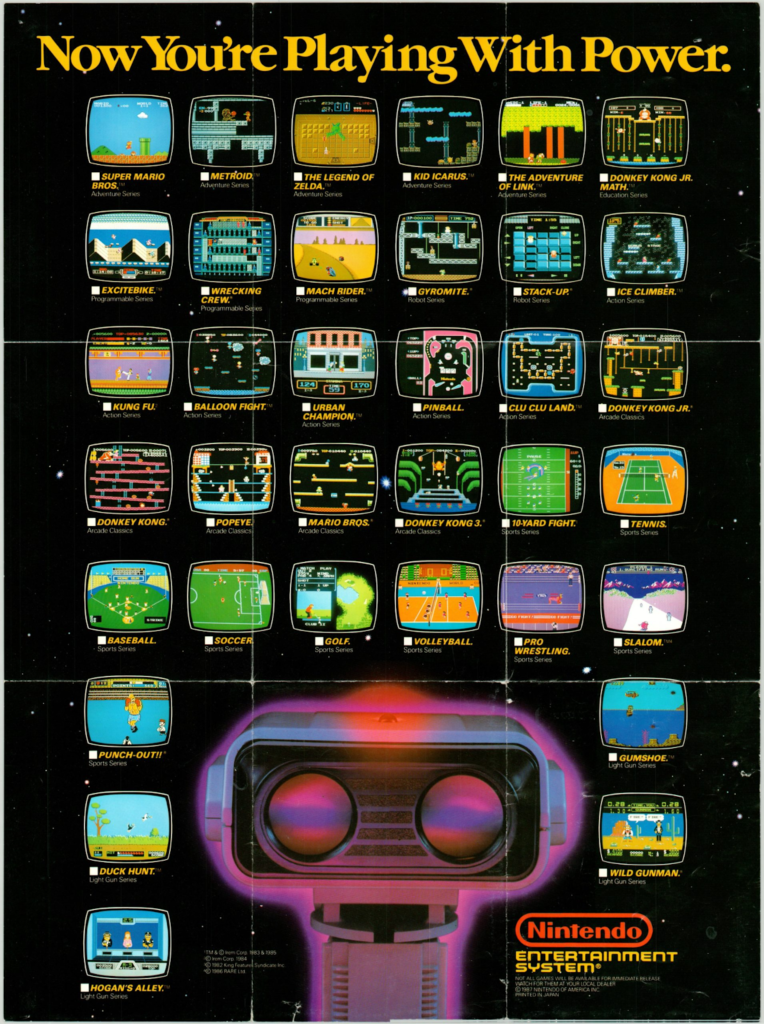
Also The Secret of Monkey Island had a character in a bar that would cross promote Loom (another game made by LucasArts). Yes it was a joke by the team about how crass advertising has become (back in the 90s), but it actually kind of works. And Cobb has become a fan favorite.

Here is the remastered screenshot which allows you to read his “Ask Me About Loom” button.

Summary
So ya, make a lot of games, cross promote from within them, and maybe spend some time building a cool dynamic cross promotion tool.
I cannot repeat this enough: almost nobody makes a sustainable living off of 1 game. You MUST release lots of games over years to build up an audience, a reputation, and a consistent income to do this full time.
Please, don’t be like 75% of all developers and quit after making your first game.
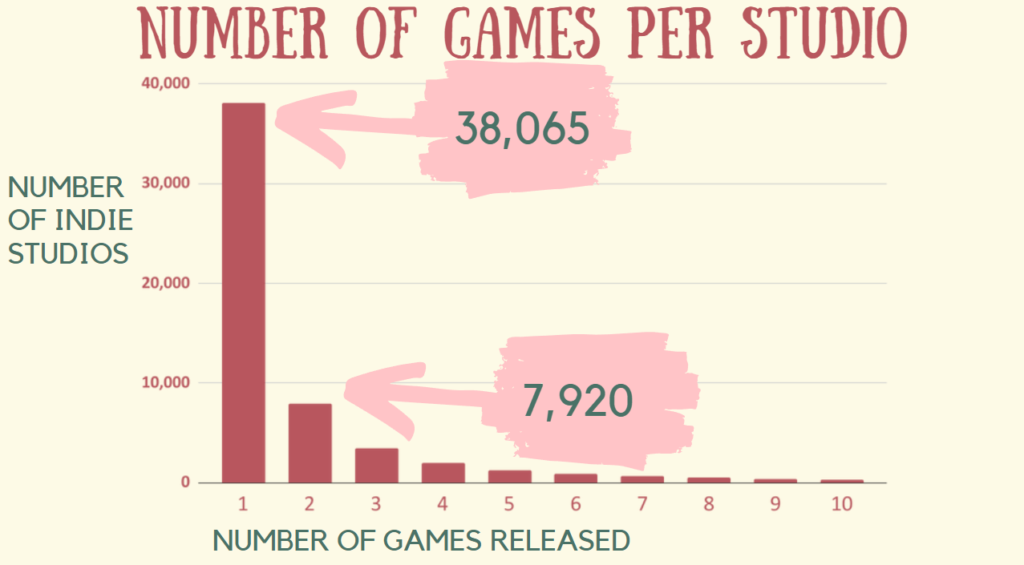
Instead be like Devolver who in 2020, made 2/3rds of their income from their back catalog:
